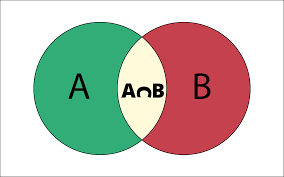Example of a Proof Involving Sets

Prove that {12n : n ∈ Z} ⊆ {2n : n ∈ Z}∩{3n : n ∈ Z}.
Proof. Suppose a ∈ {12n : n ∈ Z}.
This means a = 12n for some n ∈ Z. Therefore a = 2(6n) and a = 3(4n).
From a = 2(6n), it follows that a is multiple of 2, so a ∈ {2n : n ∈ Z}.
From a = 3(4n), it follows that a is multiple of 3, so a ∈ {3n : n ∈ Z}.
Thus, by definition of the intersection of two sets, we have a ∈ {2n : n ∈ Z}∩{3n : n ∈ Z}.
Thus {12n : n ∈ Z} ⊆ {2n : n ∈ Z}∩{3n : n ∈ Z}.
Explanation of the Proof.
The proof provided establishes the inclusion relationship between the set {12n : n ∈ Z} and the intersection of the sets {2n : n ∈ Z} and {3n : n ∈ Z}.
a. Assume a is an element of {12n : n ∈ Z}: The proof begins by assuming that a belongs to the set {12n : n ∈ Z}. This means a can be expressed as a = 12n for some n ∈ Z.
b. Express a as a multiple of 2 and 3: From the assumption a = 12n, we can observe that a can also be expressed as a = 2(6n) and a = 3(4n). This follows directly from the properties of multiplication.
c. Deduce that a belongs to {2n : n ∈ Z}: From the expression a = 2(6n), we can conclude that a is a multiple of 2, as it is equal to 2 multiplied by an integer. Therefore, a ∈ {2n : n ∈ Z}.
d. Deduce that a belongs to {3n : n ∈ Z}: From the expression a = 3(4n), we can conclude that a is a multiple of 3, as it is equal to 3 multiplied by an integer. Therefore, a ∈ {3n : n ∈ Z}.
e. Apply the definition of set intersection: By the definition of the intersection of two sets, if an element belongs to both sets, it belongs to their intersection. Therefore, since a belongs to both {2n : n ∈ Z} and {3n : n ∈ Z}, it follows that a ∈ {2n : n ∈ Z}∩{3n : n ∈ Z}.
f. Conclusion: By showing that for any element a in {12n : n ∈ Z}, a also belongs to {2n : n ∈ Z}∩{3n : n ∈ Z}, the proof establishes the inclusion relationship.
Therefore, we can conclude that {12n : n ∈ Z} ⊆ {2n : n ∈ Z}∩{3n : n ∈ Z}. By reasoning through the properties and definitions of the sets involved, the proof demonstrates the desired inclusion relationship between the sets.